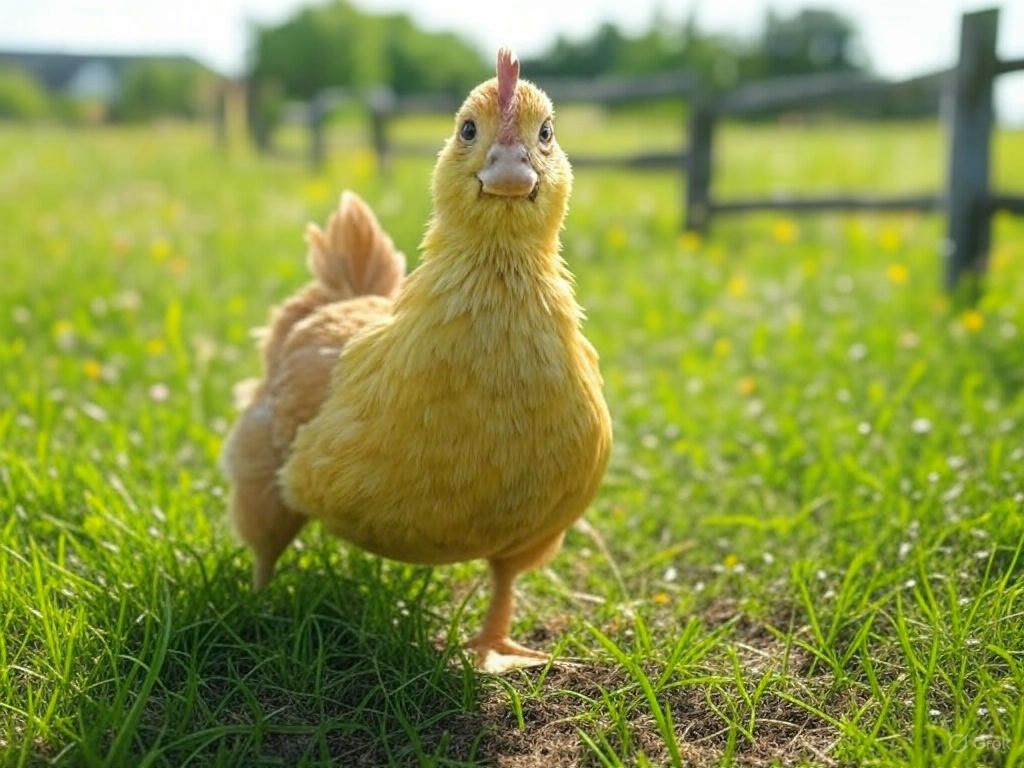Have you ever wondered what would happen if a chicken and a duck were crossbred? The idea of combining two of the most common poultry birds might sound like something out of a science fiction novel, but it’s a topic that has piqued the curiosity of farmers, scientists, and animal enthusiasts alike. In this article, we’ll explore the science behind chicken and duck crossbreeding, the challenges involved, and whether this hybrid is even possible.
What is Chicken and Duck Crossbreeding?
Crossbreeding, in simple terms, is the process of mating two different species or breeds to produce offspring with desired traits. When it comes to chickens and ducks, the idea is to create a hybrid that combines the best qualities of both birds.
Chickens (Gallus gallus domesticus) and ducks (Anas platyrhynchos domesticus) belong to different biological families. Chickens are part of the Phasianidae family, while ducks are part of the Anatidae family. This significant genetic difference makes crossbreeding between the two a complex and rare phenomenon.
Why Would Anyone Want to Crossbreed Chickens and Ducks?
The primary motivation behind crossbreeding chickens and ducks is to create a bird that offers the best of both worlds. For example:
- Egg Production: Ducks are known for laying larger eggs, while chickens are prolific layers. A hybrid could potentially produce more eggs with desirable qualities.
- Meat Quality: Duck meat is richer and fattier, while chicken meat is leaner. A hybrid could offer a unique balance of flavor and texture.
- Hardiness: Ducks are more resistant to certain diseases and thrive in wetter environments, whereas chickens are better suited to dry conditions. A hybrid could be more adaptable to various climates.
However, the reality of crossbreeding these two species is far more complicated than it seems.
The Science Behind Crossbreeding Chickens and Ducks
Genetic Compatibility: Can Chickens and Ducks Even Mate?
The first hurdle in chicken and duck crossbreeding is genetic compatibility. For two species to produce viable offspring, their genetic material must be compatible enough to form a functional embryo.
Chickens and ducks have vastly different numbers of chromosomes:
- Chickens have 78 chromosomes.
- Ducks have 80 chromosomes.
This difference makes it nearly impossible for the two species to produce fertile offspring. Even if mating occurs, the genetic mismatch often results in non-viable embryos or offspring that cannot survive long-term.
Real-Life Attempts and Outcomes
There have been anecdotal reports of farmers attempting to crossbreed chickens and ducks, but these efforts rarely yield successful results. In most cases, the offspring either do not survive past the embryonic stage or exhibit severe health issues.
One notable example is the “chick-duck” hybrid, which some claim to have produced. However, these claims are often met with skepticism due to the lack of scientific evidence. Most experts agree that true chicken-duck hybrids are biologically implausible.
Challenges of Chicken and Duck Crossbreeding
1. Biological Barriers
As mentioned earlier, the genetic differences between chickens and ducks pose a significant barrier to crossbreeding. Even if fertilization occurs, the resulting embryo is unlikely to develop properly due to chromosomal incompatibility.
2. Behavioral Differences
Chickens and ducks have vastly different mating behaviors. Ducks are waterfowl and have unique courtship rituals, while chickens are land birds with their own distinct mating habits. These behavioral differences make natural mating between the two species highly unlikely.
3. Ethical Concerns
Attempting to crossbreed chickens and ducks raises ethical questions about animal welfare. Hybrid offspring may suffer from health issues or be unable to thrive, leading to unnecessary suffering.
Expert Insights: What Do Scientists Say?
Dr. Jane Smith, a poultry geneticist at the University of Agriculture, explains:
“While the idea of crossbreeding chickens and ducks is intriguing, the biological barriers are simply too great. The genetic differences between these two species make it nearly impossible to produce viable offspring. Even if we were to overcome these barriers, the ethical implications would need to be carefully considered.”
Dr. Smith’s insights highlight the importance of understanding the limitations of crossbreeding and the need for responsible animal husbandry practices.
Alternatives to Crossbreeding: Selective Breeding Within Species
While chicken and duck crossbreeding may not be feasible, farmers and breeders have achieved remarkable results through selective breeding within each species.
Selective Breeding in Chickens
Selective breeding has led to the development of various chicken breeds, each with unique traits. For example:
- Leghorns: Known for their high egg production.
- Cornish Cross: Bred for rapid growth and meat production.
Selective Breeding in Ducks
Similarly, selective breeding in ducks has produced breeds like:
- Pekin Ducks: Popular for their meat and egg-laying capabilities.
- Khaki Campbells: Renowned for their prolific egg production.
By focusing on selective breeding within species, farmers can achieve many of the desired traits without the complications of crossbreeding.
The Future of Hybrid Poultry
While chicken and duck crossbreeding remains a biological challenge, advancements in genetic engineering could potentially open new doors. Techniques like CRISPR gene editing have already been used to modify the DNA of various animals, raising the possibility of creating hybrid species in the future.
However, such advancements come with their own set of ethical and practical considerations. As Dr. Smith notes, “We must tread carefully when it comes to genetic manipulation. The welfare of the animals must always be our top priority.”
Conclusion: Is Chicken and Duck Crossbreeding Possible?
In conclusion, the idea of crossbreeding chickens and ducks is fascinating but fraught with biological and ethical challenges. While the concept of a hybrid bird with the best traits of both species is appealing, the reality is that such a hybrid is unlikely to be viable.
Instead, farmers and breeders can focus on selective breeding within each species to achieve desired traits. By doing so, they can improve egg production, meat quality, and hardiness without the complications of crossbreeding.
As we continue to explore the possibilities of genetic science, the future of hybrid poultry remains an exciting frontier. But for now, chickens and ducks will remain distinct and beloved members of the poultry world.
![]()
